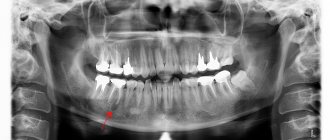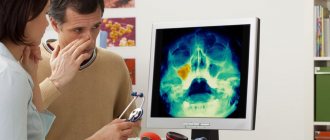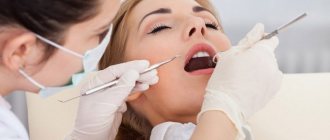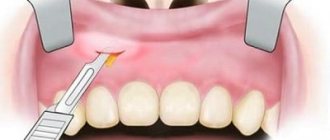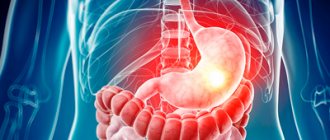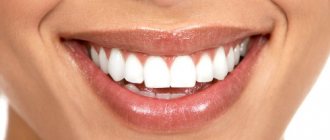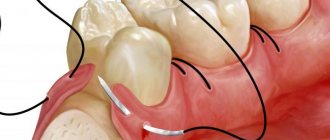Inflammatory processes that form around the root are very dangerous, because they not only destroy the cement of the root and the adjacent bone tissue of the jaw, but also affect the gums. If a dentist discovers a cyst, then soon a trip to the surgeon will be necessary, but this does not mean that the patient will lose a tooth. At the Implantmaster clinic, cyst removal is performed without tooth extraction. Our specialists use the latest surgical techniques and equipment.
Removal of a dental cyst is a serious operation in dental surgery. Two decades ago, the presence of a purulent formation on the root led to the removal of a possibly healthy tooth. Modern treatment options for cysts are more varied. There are many therapeutic (conservative) and surgical methods to combat tumors. If doctors have the necessary knowledge and professional skills, patients can count on receiving quality treatment.
In the innovative dental clinic "Implantmaster" in Moscow, cyst removal is carried out by specialists of the highest category, who regularly improve their skills in the best clinics in Europe. We are able to solve complex problems in the fastest possible time and satisfy the needs of even the most demanding patients, setting loyal prices for the services provided. Our doctors are constantly improving their skills, mastering new techniques for removing cysts. The latest materials are used, modern equipment is used for diagnosis and treatment.
Next we will talk about the very concept of “cyst” and methods of its treatment. You will also learn about the main stages of removing a dental cyst, and will be able to get acquainted with the indications for the surgical operation.
What is a dental cyst and how to remove it?
Radical dental cyst is a complex chronic disease. It has its own shell and is filled with purulent contents. The disease progresses on the roots and under the gum. A cyst appears when early infectious inflammation, which is based on pathogenic microflora, is not treated.
Removal of a dental cyst is performed surgically . The tumor can grow, affecting the gums and cheeks from the inside of the mouth. In some cases, sepsis may develop.
All this makes it difficult for the patient to function normally. To cure the disease, conservative methods are used:
- at the beginning of the procedure, the doctor informs the patient about the possible consequences (it is worth making this the first point);
- the doctor performs an opening of the dental cavity;
- cleansing the cavity from affected tissues;
- treatment with solutions of antibiotics and antiseptics;
- Then, within half an hour, the tooth cyst is removed without removing the tooth .
The patient will have a chance for recovery and further normal life. The main feature of this disease is its asymptomatic course. The patient may remain unaware for a long time. The consequences of this disease can lead to another complex process - sinusitis (if the cyst is located near the sinuses). It is imperative to monitor the cleanliness of the oral cavity and the condition of the gums, and also come to the doctor for sanitation on time.
What are the stages of the operation?
The procedure consists of the following steps:
- The desired area is numbed using conduction or infiltration anesthesia.
- The gum is peeled off from the wall using a rasp.
- The tooth is loosened and removed using forceps or an elevator.
- The dental unit is removed from the socket. In difficult cases, the tooth is first sawed into pieces using a drill, and then each of them is removed separately.
- The extracted tooth and socket are examined by a doctor.
- The cyst cavity is cleaned, and the wound is treated with antiseptic drugs.
- The wound is stitched up.
- Using an X-ray examination, the doctor makes sure that fragments, particles of the tooth and the removed tumor do not remain in the jaw.
- Antibiotics, anti-inflammatory drugs and anesthetics are prescribed.
Two to three days after the operation, you need to re-visit your dentist to monitor the condition of the tooth socket.
Causes of dental cysts
Ten percent of patients have indications for removal of a dental cyst. Most do not suspect anything, because the disease proceeds secretly for a long time and does not manifest itself in any way. Often, cyst formation is a hereditary disease, and sometimes it indicates poor oral hygiene. But more often the reasons are untreated diseases or the use of low-quality products and drugs, leading to the need to remove the dental cyst. If you identify this disease in time and immediately consult a doctor, it will not be difficult to cope. But if you leave a formation with pus and mucus for several months, it can grow up to 2-3 cm. In this case, proper surgical removal of the dental cyst should be entrusted to a qualified specialist.
Implantmaster employs highly qualified specialists; they have the necessary skills for comfortable and high-quality treatment. Also, to correctly diagnose the disease and determine the exact size of the cyst, the clinic has a CT scanner (the images are more accurate and the radiation is even less), it is possible to take a panoramic image of all teeth, as well as targeted radiography of a specific tooth. The diagnosis becomes more accurate.
There are several causes of cysts:
- A complicated form of caries is severe destruction of the enamel, through which microbes penetrate inside and form purulent foci.
- Untreated pulpitis, when part of the nerve is outside, is a good flora for the growth of bacteria.
- The complication of periodontitis, with inflammation of the connective tissue, is the most difficult to detect.
- Removal of a dental cyst is often necessary for children when replacing milk teeth with permanent ones; microbes can penetrate into the sockets.
- The injured mucous membrane of the palate, cheeks, tongue, and gums can serve as an excellent route for the penetration of microorganisms.
- Past disease of the ENT organs. Colds, chronic tonsillitis, pharyngitis, sinusitis can cause a tumor and the need to remove a dental cyst, otherwise dangerous complications cannot be avoided.
Preventive measures
To ensure tissue healing proceeds faster and serious complications do not arise, a number of recommendations must be followed. Dentists at the Optimal Choice clinic give the following advice to their patients:
- For several days after surgery, rest is required; any physical activity (even light) is contraindicated;
- avoid hot water procedures, including baths, steam baths, saunas, and do not use hot compresses;
- You cannot use active mouth rinses for 2-3 days; if necessary, they can be replaced with oral baths with infusions or decoctions of medicinal herbs (with oak bark, calendula, eucalyptus, sage), furatsilin, chlorhexidine, etc.;
- do not drink alcoholic beverages or smoke for 2-3 days;
- Taking medications prescribed by a doctor is mandatory.
Compliance with these rules, as well as regular visits to the dentist for preventive examinations and at the slightest unpleasant symptoms, will allow you to avoid serious negative consequences and significant financial expenses for dental services.
When is it necessary to remove a dental cyst?
Is surgical removal of a cyst on a tooth necessary? In some cases, such a radical method cannot be avoided. If the affected tissue is not eliminated, the bubble with purulent contents will increase in size and create pressure on the gum. The outcome may be tumor formation.
Indications for removal:
- capsule diameter is more than 1 cm;
- the presence of a pin in the root canal, which prevents refilling;
- the canal is not completely sealed, there is no material near the very top;
- Conservative treatment is not effective.
Alternative Methods
A neoplasm localized at the root apex can be treated conservatively if its diameter does not exceed 8 mm and the root canals are not sealed. In this case, access to the affected area is through the crown.
Therapeutic treatment
The root canal is depulped, cleaned, and expanded. The cavity is cleared of purulent masses, treated with antiseptics, and filled with a special paste. After treatment, the canal and crown part of the tooth are filled. You need to be examined within a month to rule out relapses.
Laser treatment
It is carried out similarly to the previous method, only the capsule is exposed to a laser. Laser beams quickly remove the tumor and disinfect the cavity. After such a procedure, the recovery period is easier and faster, and complications are minimal.
Methods for removing dental cysts
Correct treatment of a dental cyst without removal depends on the causes and clinical course. The clinical picture becomes clear after examination in a chair, a targeted photograph, a panoramic photograph of all teeth, . These examination and diagnostic methods for the necessary removal of a dental cyst are available at Implantmaster in Moscow. Examinations are performed before surgery to determine the specific location of the inflammation. If possible, conservative therapy is used to prevent further increase in inflammation. It consists of using a rubber dam to isolate the working field and provide comfort during treatment. Next, the pulp chamber is opened, cleaned, treated with an antiseptic solution and the canals are sealed. Therapy involves taking antimicrobial drugs, vitamins and other medications. If conservative tactics are not effective, then various surgical techniques are used to remove the tooth cyst without removing the causative tooth.
Cystotomy
Used for large cysts. The doctor removes parts of the formation that are not in contact with the vessels. Afterwards, an obturator is installed into the resulting cavity - a device that prevents tissue fusion. After some time, the remaining portion of the cyst joins the epithelium of the oral cavity, changes its structure and becomes safe for the body.
Hemisection
During the operation, the root to which the formation is attached and the adjacent coronal part are removed. The resulting space is restored using an orthopedic structure. The above method is quite traumatic, so it is considered outdated.
.
Cystectomies
The Implantmaster clinic answers the question: is it possible to cure a dental cyst without removing the tooth itself? – positive. Our specialists use the most modern technique - cystectomy. The tumor is completely removed without affecting healthy tissue. The operation takes place under local anesthesia in the surgical office and involves the use of a Labomed Magna dental microscope.
At the beginning of the procedure, the specialist determines the location of the patient’s formation based on examination and x-ray images. He “opens” it, cleans out the contents with special tools, puts antiseptic inside and stitches it up. After some time, the cavity remaining after the operation heals on its own, without requiring additional replanting of bone blocks. Cystectomy surgery takes 15-40 minutes, depending on the size of the cyst and bone structure. After an hour, the patient can go home.
Conservative treatment
This type of therapy allows you to be cured without surgery. In this case, an incision is not required to gain access to the tumor. At the initial stage of treatment, the dentist drills out and cleans out the affected root canal. The apex of the tooth root connects to the cyst, so once the root canal is opened, the contents flow out. After cleaning and disinfecting the root canal, the doctor introduces antibiotics and substances into the cavity that destroy its capsule.
After this, the doctor fills the resulting cavity with a special paste that will help restore bone tissue. The hole is then filled. If after 6 months the cyst is not detected on an x-ray, the treatment can be considered successful. This method helps in about 75% of cases.
An innovative treatment method without surgery
is depophoresis. It helps eliminate infection in all root canals without drilling them. The dentist exposes the mouth of the canal and inserts an electrode into it. Another electrode is pressed against the surface of the cheek, which produces a weak current discharge. Together with the discharge, copper-calcium hydroxide is passed through the root canal, which penetrates into all hard-to-reach areas, destroying all bacteria, microorganisms and dead cells.
After three sessions of depophoresis, the damaged tooth is filled and its crown is restored. Regardless of what type of tumor was detected, treatment with depophoresis allows you to get rid of it in almost 100% of cases.
Get a consultation
We will answer all your questions before visiting the clinic!
+7
Online registration
Removal of a dental cyst by resection
Removal of a dental cyst by resection of the root apex is a tooth-saving operation, i.e., making it possible not to part with the tooth. It is carried out by excision of the root and removal of the affected fragments. Then, to avoid the spread of infection to adjacent areas of hard and soft tissue, the canal is sealed. As a result, this is a good way to cure a dental cyst at the initial stage without removing the entire unit. If a fragment of the tooth remains, it will be replaced with prosthetics in the future. Tooth-preserving methods are valued by specialists because they help preserve the integrity of the dentition. Therefore, resection of the root apex is also used in other cases:
- Inflammation of the tooth under the crown. The obvious solution is to remove the prosthesis, remove the abscess, and install a new design. However, these manipulations are more costly and time-consuming than root resection.
- Root canal abscess, often irregularly shaped, due to unscrupulous filling or the use of low-quality materials.
- With osteomyelitis. There is a need to cut out the affected areas of bone tissue at the border with the roots. This helps prevent deep infection.
- When foreign objects are detected in the channels - boron particles, files. This happens when using low-quality equipment. Our clinic uses the latest instruments based on titanium alloy.
However, such an effective operation has contraindications. Removal of a dental cyst by resection is not carried out if: diseased and healthy roots are located critically close; in the presence of extensive chips of the crown; high tooth mobility; in the stage of acute periodontitis. Not recommended for people with diabetes, mental and nervous disorders, chronic heart and vascular diseases, pathologies of the lungs and thyroid gland.
Rehabilitation period
After the procedure, swelling and pain occur, the temperature may rise, and the head may hurt. Acute symptoms are relieved with analgesics and anti-inflammatory drugs. Antibiotics are prescribed to prevent infection. They are also needed to prevent relapse and the formation of a new capsule under the extracted tooth.
Doctors recommend:
- eat liquid, soft food at a comfortable temperature;
- do not lick the blood clot;
- avoid high physical activity, temporarily stop playing sports;
- do not overheat the body (hot bath, sauna, bathhouse, beach, etc.);
- stop smoking and alcohol, as this has a bad effect on wound healing;
- rinse your mouth after eating;
- Use a soft-bristle toothbrush, avoiding the operated area.
It is useful to rinse your mouth with soda or salt solution, decoctions of chamomile, calendula, and oak bark. You can use pharmaceutical antiseptics: Chlorhexidine, Miramistin, Romazulan.
How is surgical removal of a dental cyst performed?
How is the operation to remove a dental cyst performed? It includes the following steps:
- Making a diagnosis using x-rays to determine the size of the capsule and the condition of the roots.
- Conducting local anesthesia.
- Cutting and peeling of the gums.
- Drilling out a bony area in the body of the jaw for better access to the formation.
- High-quality cleaning of the contents of the capsule and removal of its shell to prevent further illness.
- Rinsing the cavity with antiseptics.
- In some cases, if necessary, removal of part of the affected root and retrograde filling of the canals.
- Filling the cyst location with osteoplastic material (artificial bone).
- Suturing the mucous membrane.
- After the procedure, it is mandatory to take a control X-ray to ensure that the operation was carried out properly (all infected tissues were removed).
A tooth is removed if its roots are in a cystic formation or if it is completely destroyed.
Surgery
Most often, a cystectomy procedure is performed to surgically remove a tumor. It involves removing the cyst and damaged root tip. The advantage of this method is its high efficiency. Its disadvantages include the fact that cystectomy is a rather complex operation, and not every surgeon decides to perform it.
A more complex method is hemisection. This operation is performed when one of the roots is completely destroyed. During surgery, the doctor removes the disease-causing capsule, damaged root and part of the tooth crown. The defect resulting from surgical resection is eliminated using composite materials or a crown.
Much depends on at what stage the capsule was discovered. Treatment can be accompanied by tooth extraction only if it is entirely located in the capsule of the cyst or its tissues are almost completely destroyed.
Laser removal of dental cyst
If the tumor is small, then laser removal may be used. This is a simple and safe way. A laser beam is passed through the root canal, sterilizing it, and the cyst gradually reduces in size.
Positive aspects of using laser:
- not painful and bloodless;
- fast regeneration;
- disinfection of the inflamed area and, as a result, reducing the risk of spreading bacteria.
The disadvantages include the high cost of the procedure, as well as the availability of a laser device not in all clinics.
We employ leading Russian dentists
Dentist Khmarenko Anton Nikolaevich
- current member of the Russian Dental Society (RSO)
- current member of the European Society of Microscopic Dentistry (ESMD)
- specialist in dental implantation and guided bone regeneration
- specialist in the field of dental prosthetics using Cerec CAD/CAM technology
- specialist in endodontics using a dental microscope
In 2007 he graduated with honors from the Moscow State Medical and Dental University.
Complications after removal of a dental cyst
After removal of a dental cyst, what unpleasant consequences may be possible? Any surgical intervention using anesthesia, like removal of a cyst, can lead to complications. They arise when the doctor does not fully adhere to the chosen tactics, with incorrect diagnosis at the preparation stage, or with the use of inappropriate equipment. Here at Implantmaster, complications do not arise after cyst removal thanks to the professionalism of doctors, modern equipment and the use of the latest techniques. But every patient should be informed about the likely consequences of the procedure. Body temperature may increase after removal of a dental cyst. Pain in the gum area is possible after removal of a dental cyst. The occurrence of edema and hematomas is inevitable. But their consequences are quickly eliminated by antibacterial drugs and constant cooling compresses. However, there are more serious complications:
- It is necessary to first take a blood clotting test to prevent rupture of blood vessels when accessing the root.
- There is a possibility of injury to nerve bundles. Therefore, the tooth may continue to ache even after the cyst is removed. Taking painkillers helps minimize this effect.
- With poor oral hygiene, suppuration can form again. To prevent this from happening, a course of antimicrobial drugs is prescribed.
- Incomplete removal of the affected tissue leads to secondary infection. It is necessary to check everything carefully before applying stitches.
- Perforation of the walls of the maxillary sinuses. Today this almost never happens.
We are confident of an excellent result, even when other clinics do not undertake cyst treatment. Much also depends on the patient. It is necessary to follow the doctor's recommendations in the first days after surgery. Limit consumption of hot, cold and solid foods. Do not use hard brushes or aggressive chemical rinses, and avoid sports activities. You should take vitamins and NSAIDs. Proper treatment of the body will allow you to return to normal as quickly as possible.
Methods for treating dental cysts
As mentioned earlier, the only reliable and error-free method for diagnosing a cyst on the root of a tooth is an x-ray. In most cases, one x-ray is sufficient; however, due to individual tooth growth patterns, an additional x-ray of the root portion may be required.
Based on the analysis of X-ray data, the dentist determines and prescribes the type of treatment. Due to the difficulty of accessing the cavity, the process of getting rid of the cyst can take several sessions - however, only this method allows you to eliminate the pathology while keeping the tooth itself healthy.
There are two main directions of treatment: therapeutic and surgical.
— the sequence of actions during therapeutic treatment is as follows: the dentist gains access to the intradental canals (to do this, the tooth tissue is opened), expands them, cleans the cavity from pus, then disinfects it and installs a temporary filling. In the absence of relapse and a favorable outcome, the temporary filling is replaced with a permanent one. An alternative option may be the depophoresis method. Its difference is that the cleaning of the canals occurs due to the sequential introduction of a special substance into them, which, under the influence of an electric current, disinfects them. The common property of both methods is their applicability in the early stages of the disease;
— surgical intervention is used in most cases due to its reliability and high efficiency. There are three types of surgical treatment: cystectomy, hemisection and cystotomy. The first option involves opening the gum from the side and removing the cyst, followed by suturing. Rehabilitation takes place while taking antibiotics. Hemisection requires additional removal of the affected tooth root and crown fragment. If a cystotomy is prescribed, penetration into the cavity is carried out through the near wall. This method has a significant rehabilitation period.
In addition to the above methods, laser therapy is used. Its principle of operation is to insert a thin tube into the cyst, allowing complete disinfection using a laser, followed by vacuum cleaning. This progressive method is painless and effective, since it is guaranteed to preserve the tooth and protect against recurrence of pathology.
Where can I remove a dental cyst without extracting a tooth?
If you are concerned about this problem, then we invite you to visit the Implantmaster dental clinic to get rid of a cyst on a tooth by treatment or tooth extraction. For you - qualified specialists, all the necessary ultra-modern equipment and reasonable prices.
The price for removing a dental cyst is determined by the services of an endodontist and a surgeon. Endodontic treatment is required with a microscope, including anesthesia, materials, etc., starts from 6,500 rubles. Removal of the cyst by a surgeon is paid separately—about 10,000 rubles. This cost includes all surgical procedures. Lifetime guarantee for treatment at Implantmaster.
Author:
Possible complications
Among the common consequences of removing a tooth with a cyst may be the following complications:
- slight increase in body temperature;
- migraine;
- soft tissue swelling;
- toothache.
In order to alleviate the patient's condition, symptomatic treatment is prescribed.
If the doctor is insufficiently qualified or the patient does not comply with medical recommendations, the following complications may arise as a result of surgical intervention:
- infectious process in tissues;
- injury to nerve endings;
- profuse bleeding.
To avoid this, you must contact only trusted dentists with good experience and clinics with modern equipment, and also follow all recommendations given by your doctor.
Why do you need to remove the cyst?
If a dental cyst is not removed in time, even with an asymptomatic course of the disease, the consequences can be very serious - this is a real “time bomb”.
- The main danger of a cyst is that sooner or later it will destroy the affected tooth, and then “get” to the neighboring teeth.
- Cysts are reborn. Slowly but surely, so in 15-20 years it may already be a malignant formation.
- An infection is raging in the cavity of the cyst, so with a general illness, hypothermia, or a decrease in immunity as a result of simple stress, acute purulent inflammation is possible - flux, abscess, phlegmon.
- The infection can spread to adjacent lymph nodes and cause inflammation - lymphadenitis.
- Gradual thinning of the jaw bone in the affected area, due to purulent melting, turns into osteomyelitis. Even a spontaneous fracture of the jaw is possible.
- The cyst enlarges and can grow into the nasal cavity or maxillary sinus.
- Infection in the cyst can cause sepsis, a blood poisoning.
If treatment is not started on time, the tooth will have to be removed. And this is the minimum “evil”.
The main differences between granuloma and cyst
Indicators and signs for comparative analysis Granuloma Cyst External signs, structure Solid formation covered with connective tissue. Reddish color Cavity with liquid or pus, covered with stretched skin, transparent, dirty-white in color Overall dimensions, diameter of the abscess 40 – 80 mm 90 –300 mm Result of X-ray studies There are no contours of the tumor The image shows a clear border of the round capsule Clinical course of the disease Tooth stable and stands motionless in its place The tooth becomes mobile The condition of the gums and other periodontal soft tissues, lymph nodes Swelling appears in the oral cavity, and redness of the mucous membrane occurs. The effect on bone tissue is insignificant. The cyst develops locally, the inflammation is not transmitted to the mucous membrane. The tumor causes a negative effect by reducing the development of bone tissue, “corroding” it, so the picture shows the process when hard bone tissue decreases
